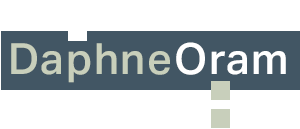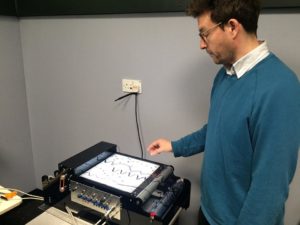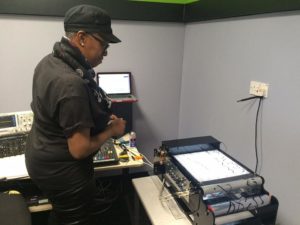
The Mini-Oramics Machine
Realised by Tom Richards from Oram’s notes and drawings
A desktop-sized follow-up to her Oramics Machine, the Mini-Oramics was one of Daphne Oram’s unfinished projects. In 2016, Tom Richards built a working Mini-Oramics machine from Oram’s original notes and drawings.
The original Oramics Machine was the size of a large office photocopier so was too cumbersome for most musicians. You can read more about Oramics in this detailed technological and historical account from Tom who made the Mini-Oramics the centre piece of his doctoral research at Goldsmiths, University of London.
In the early 1970s Oram began work on Mini-Oramics (perhaps inspired by Moog’s development of the Minimoog), but as far as we know she never completed a prototype.
“There were a lot of reasons why she didn’t launch Mini-Oramics,” explains Tom. “She was working on her own, she wasn’t affiliated to a large organisation or university.
“She had ups and downs in her life, and at the time she was working on Mini-Oramics, she also worried that her approach to musical research was out of fashion when compared to chance-based and computerised techniques. She was unable to secure the further funding she needed and she eventually moved on to other research.
“In an alternate universe, Mini-Oramics might have become an actual product, bought and used by musicians all over the world.”
Dr Mick Grierson from The Daphne Oram Trust and Tim Boon head of research at the Science Museum, London, invited Tom Richards to do a practice led PhD on the subject of Oramics. Tom decided to re-imagine and then build Mini-Oramics.
“The rules were simple. I had to imagine I was building the machine in 1973, interpreting Daphne Oram’s plans and using only the technologies that existed at that time.”

New works for Oramics
With the machine up and running, Tom is now working with contemporary composers and sound artists, giving each of them a few days to play with the Mini-Oramics system and come up with something new. He’s also working on a second iteration of his prototype, fine-tuning some of its features while he seeks backers interested in making a few more copies of the machine.
London-based sound artist Ain Bailey was one of the first to work with the machine. “It’s a fantastic instrument. I’m not a formally-trained musician, so it’s been great to work with an instrument where I can create the sounds graphically,” she said.
Other composers to work with Tom’s Mini-Oramics machine when it was first switched on include James Bulley, John Lely, Jo Thomas, Ian Stonehouse and Rebecca Fiebrink. Since then, Tom’s also been working with Shiva Feshareki and Sarah Angliss who joined Tom and James in an Oramics composition project for Camden Art Centre.
Sarah Angliss also composed ‘Strange Lines and Distances’, a live piece for voice and Mini-Oramics Machine, performed with soprano Sarah Gabriel at Tom’s album launch for Non-Classical.
Tom adds: “This is an opportunity to experience what it would have been like to use Mini-Oramics, had Oram managed to complete it. It’s a way to test how important her ideas were, and to consider how influential she could have been.”
Thesis on Oramics and the Mini-Oramics machine
Download a copy of Tom’s thesis on Oramics and the building of the Mini-Oramics machine.
